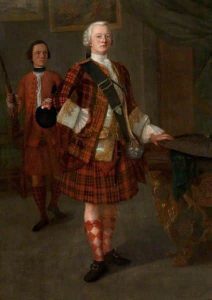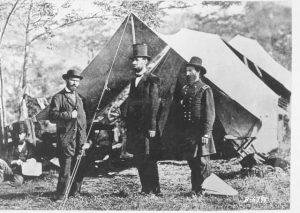Hello my amazing readers,
Εspionage has actually been one of the oldest professions. And what proper country would dare not to have its famous spies? (Even though, could a really good spy become famous? 😛 )
In this article, we are going to learn about Scotland’s famous spies! Do you think Magnolia, the heroine of my latest book, could be one of them?

Alasdair Ruadh MacDonell (c.1725-1761), 13th Chief of Glengarry, became a Jacobite informer following his imprisonment in the Tower of London. Image source.
Alastair Ruadh MacDonnell
Alastair MacDonnell of Glengarry (ca 1725-1761), also known as Alasdair Ruadh Mac Dhomhnuil, was the 13th chief of Clan MacDonell of Glengarry.
MacDonnell was born about 1725, eldest son of John McDonnell of Glengarry (?-1754). As was common for many Catholics during this period, MacDonnell was sent to France in 1738 to complete his education. This coincided with the Jacobite uprising of the time, with Bonnie Prince Charles gathering weapons and money with the support of small Scottish clans.
MacDonnell was a big part of of the Jacobite uprising, and actually visited Scotland to meet with the Jacobite chiefs who reiterated their opposition on his arrival. But after the Jacobite cause achieved considerable success in its early stages, MacDonnell was taken captive and imprisoned with his father in the Tower of London.
Released later on, MacDonnell returned to France where he continued to be active in Jacobite plotting. However, at some point, he was recruited by Henry Pelham as a British government agent, known as ‘Pickle the Spy’. This identity was hidden during his lifetime, but his secret was discovered by the historian Andrew Lang much later on. His reasons appear to have been a combination of poverty, resentment at not being compensated for his losses and a liking for the art of deception; whatever his faults, cowardice was not one of them.
His major coup was providing information on the 1752 Elibank Plot, which led to the arrest in March 1753 of Archibald Cameron, who had escaped into exile after Culloden. He was tried and executed in June but using the warrant issued in 1746, supposedly to conceal the source of the information.
The betrayal of the plot also coincided with the resumption of Prince Charles’ affair with Clementina Walkinshaw, whom he first met in 1746; by coincidence, one of her sisters was lady in waiting to the Dowager Princess of Wales and it was widely believed she was the informer.
A Scottish spy turned rogue…
Grace Elliot
Grace Dalrymple Elliott (c. 1754 – 16 May 1823) was a Scottish courtesan, writer and spy resident in Paris during the French Revolution. She was an eyewitness to events detailed in her memoirs, Journal of my life during the French Revolution.
This one is a woman who you might not think the best of…You see, she was an aristocratic and a royalist. She famously used her sexuality to provide the best for herself (you go girl!), and had many affairs with some of the most noteworthy gentlemen of the High Society, e.g. Lord Cholmondeley, Prince of Wales, and the Duke of Orleans (also known as Philippe Égalité). Each one of them, amongst others, provided her with protection and material goods.
Much of what is known about Elliot’s life in France is recorded in her memoirs, Journal of my life during the French Revolution. Although there are a number of inconsistencies in her account, her work has become one of the best-known English-language accounts of The Terror, documenting the movements of the Duke of Orleans and those within his aristocratic Jacobite circle at the Palais-Royal.
Elliott several times risked her life to assist and hide aristocrats pursued by the Revolutionary government. She helped various Marquesses, people who were attempting to flee to England from France, arranged false travel documents for several people who attempted to escape the Revolution.
In the spring of 1793, however, she was arrested and imprisoned and spent the rest of the Terror in prisons, including the Recollets and the Carmes, where she claims to have met Joséphine de Beauharnais, although this has been questioned by historians. Her writings detail her harrowing prison experiences, the violent coercion she experienced, and the illness and deprivation endured by her fellow prisoners.

Allan Pinkerton (left) was from Gorbals, Glasgow, and went on to found one of America’s biggest detective agencies. He foiled an assassination attempt against Abraham Lincoln (middle). Image source.
Allan Pinkerton
He was born in Glasgow, in 1819. He ended up funding one of the biggest detective agencies in the United States, which remains in operation today! How wild is that?!
He is credited with pioneering many spying techniques that are still used today and was one of the first detectives to shadow his subjects and ‘assume a role’ on undercover operations.
After leaving Scotland at 23 years old, he settled in Illinois, were he worked in the woods. After observing a group of counterfeiters, he reported it to the sheriff, and became the first police detective in Chicago. Later he founded Pinkerton and Co, a private detective agency whose business logo was a wide open eye with the caption “we never sleep”. (Do you think he has any connections to the Illuminati?)
In 1861, he foiled an assassination plot against Abraham Lincoln and was then appointed head of Union Intelligence Service during the first two years of the American Civil War.
These are some of Scotland’s most famous spies…Who do you think did the greatest work? Let me know in the comments!
Until next time…
Written by Eloise Madigan

 Share this book
Share this book